The Definition of Clutch
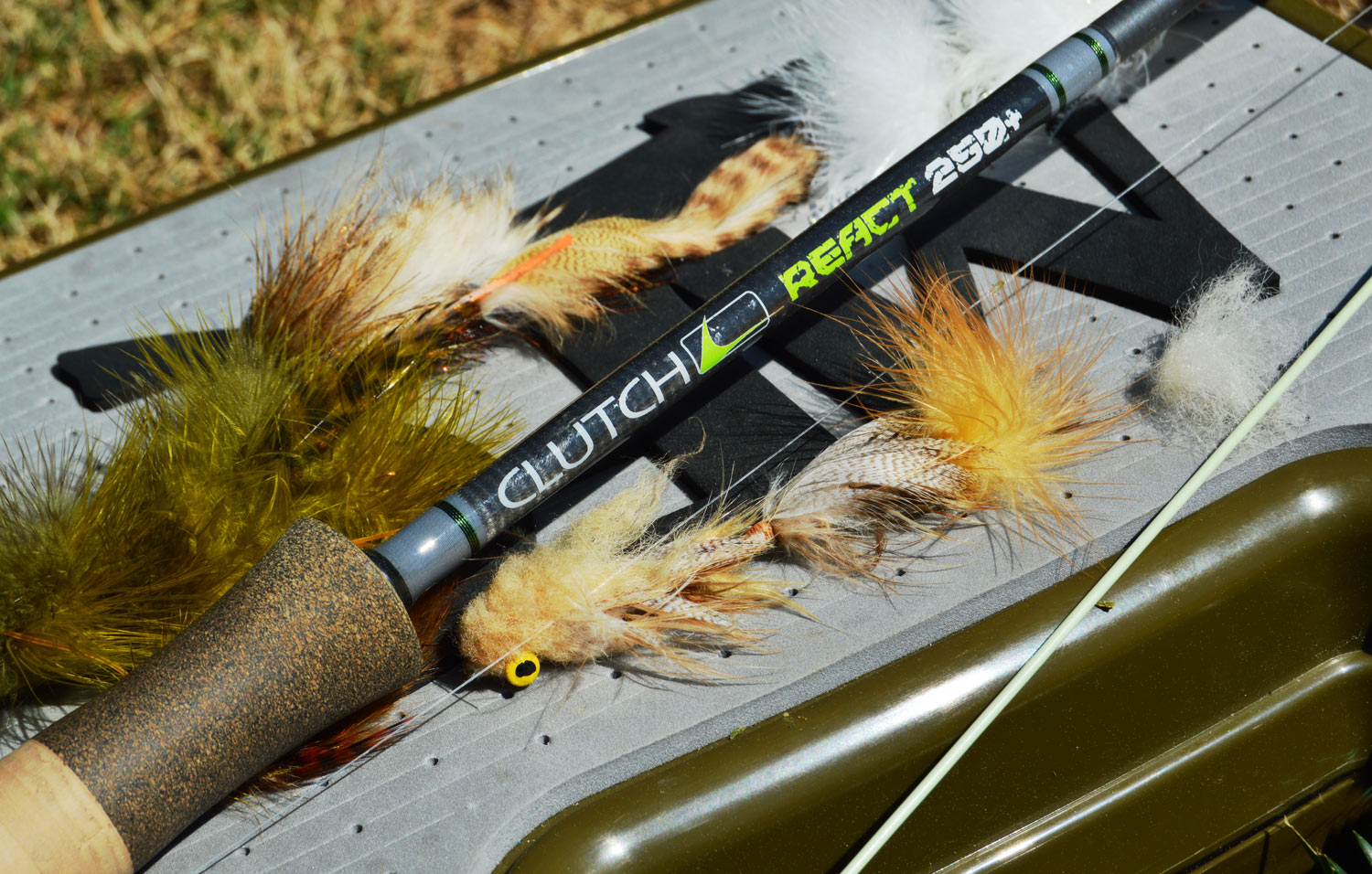
By Justin Pickett
When you hear the word “Clutch”, what comes to mind?
If you look it up in the dictionary, there are a variety of definitions.
“To hold tightly.” “To seize.” “Successful in tense situations.” “Power or control.”
It is a versatile word, and can be used as a noun, verb, or adjective in various contexts.
So how might the word “Clutch” fit into the world of fly fishing?
Enter Clutch Fly Rods.
You may, or may not, have heard of them. They are a small group of fishy dudes that decided they wanted to make quality, purpose-driven fly rods and put them in the hands of anglers around the world, going toe to toe with the industry’s biggest names. And they’re hitting the scene, guns-a-blazin’!
Headed by Lee Janik, Clutch has been producing some fine sticks out of their Ohio shop. And we’re not talking about cookie cutter rods either. I was surprised to find that they offer several 1-piece rods. As a matter of fact, half of their models are finished in one piece. These rods aren’t your typical $100 starter rods, and run on the higher end of the market, with the exception of their newest rod, the Core (which is made with many of the same quality components but at a lower price point). Initially, I even questioned how such a new, smaller rod company could enter the market (successfully might I add) with heavier price tags. I’m used to seeing newer companies start smaller and offer more low-cost, imported gear. However, the quality of these rods’ components and the ingenuity put into developing these rods come alive once you’re on the water with one of these bad boys. These fellas mean business and from the get-go they wanted to put quality, purpose-driven, USA made rods into the hands of fly fishermen, both beginner and accomplished. Each model has been meticulously designed and tested. Each model and length of rod has its own unique taper, as opposed to having the same taper across all lengths/weights of a rod family. It’s that kind of effort and thoughtfulness that is taking Clutch Fly Rods to the next level. No inflated egos. No BS. No corners cut. Just quality and performance molded from the hands of passionate rodsmiths and fishermen. Take a look at their staff. I bet you’ll recognize some names…. You think these anglers would be willing to put their names next to something that fell short of awesome? I think not.
FOR THE PAST FEW MONTHS I’VE BEEN TOTING A REACT 250+ WITH ME EVERYWHERE I GO.
Read More »Sunday Classic / Streamer Tactics for Small Trout Water
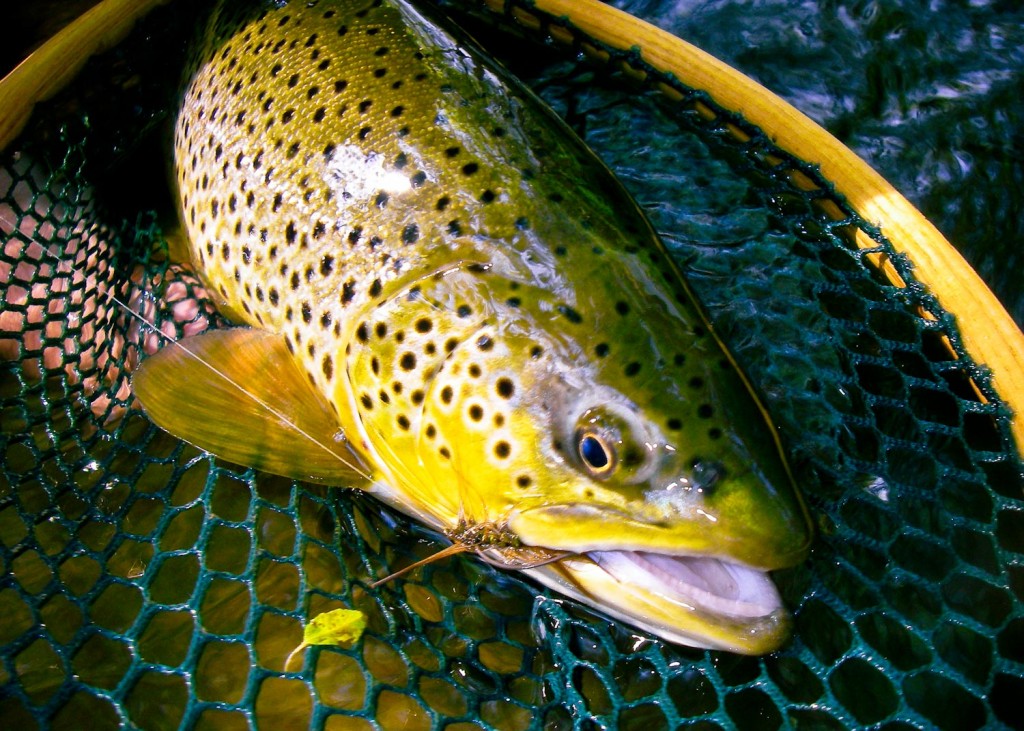
By Kent Klewein
Want to catch big fish in small streams?
I recently wrote an article for Southern Culture on the Fly magazine that talked about streamer fishing tactics and rigging for small trout water, and I wanted to share it on the blog. Make sure to check out the full fall issue of SCOF, which is gangbusters as usual. Below is my revised version that I’ve edited to be a little more clear, and I’ve added further explanation in areas that I felt needed it.
Streamer Tactics for Small Trout Water
Streamer fishing isn’t for everyone. I’ve known fly fisherman that would refuse to tie one on, even if you offered them a 20 dollar bill. But for those very few anglers that find fishing them repulsive, there’s plenty more of us out there that hold a deep love for streamers. It’s long been known by fly fisherman that streamers hold an uncanny ability to tempt the largest fish in our water. Streamers work on all types of trout water (rivers, streams and still-waters), but despite their wide range of effectiveness, most of the attention and information provided to fly fisherman in the past has been heavily skewed toward only promoting fishing them on our larger rivers and streams. To some degree, this favoritism has resulted in giving the impression to many beginner and intermediate fly fisherman that streamer fishing isn’t meant for small stream applications, and they should leave them at home. The truth is, that’s not the case at all. I’ve landed some of my largest trout on small streams with streamers when I couldn’t get them to eat a dry or wet fly.
It’s important for fly anglers to know they can have just as much success with streamers on small water as they can on larger water, and they shouldn’t overlook the opportunity to use them when conditions are right. Furthermore, if we lumped all of our trout water together in the region, the overwhelming majority of it would be considered small trout streams, creeks and high-elevation tributaries.
Small Stream Strategies for Streamers
The first thing you need to understand is that you need to fish streamers differently than you do on large trout water. Large water streamer fishing is all about making repetitive presentations and covering lots of high percentage trout water–you make considerably longer casts and stealth becomes less of a factor. On small trout water, stealth is huge and you don’t want to cover a high percentage of trout lies by carpet bombing it with a plethora of presentations. You’ll find it much more effective if you instead take a hunter’s approach that focuses on making a one-shot kill.
Start out by first locating where you think a large trout may be holding, approach the spot with a high degree of stealth, and lastly, strive to make a presentation that allows you to work your streamer through the highest percentage spots right off the bat. You want to accomplish this with as few casts as possible, preferably only one or two.
There’s no dissecting water with your streamers here, folks. We’re not trying to
Read More »Saturday Shoutout / The Journal on Andros
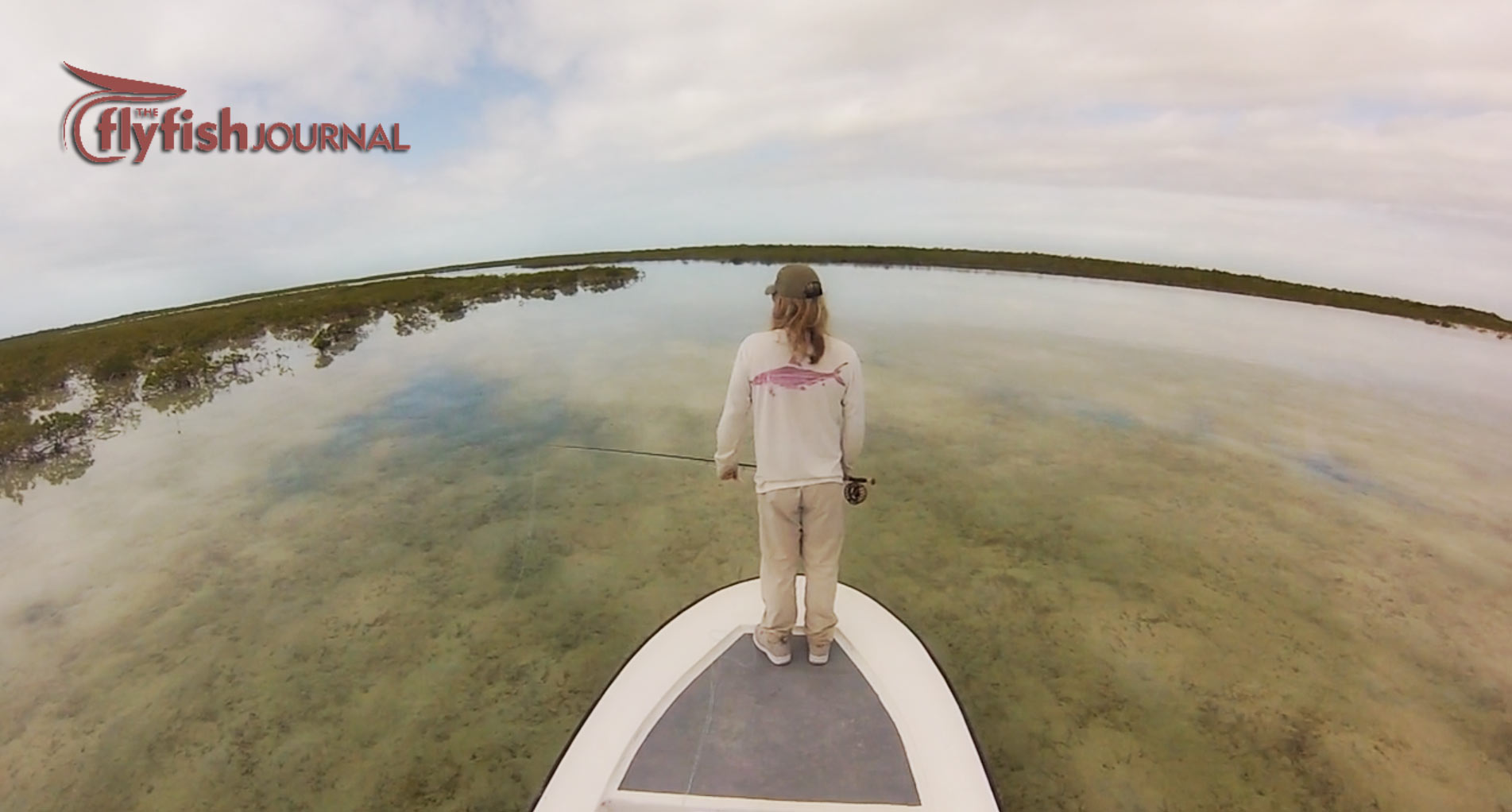
Take a trip to South Andros with the Fly Fish Journal.
I ran into these guys at the Congotown airport on their way home. Looks like they had a good week. Watching this video makes me wish I was there now. I’ll have to wait until November. You should join me!
ENJOY THE FLY FISH JOURNAL VIDEO FROM SOUTH ANDROS.
Read More »The Truth About Scientific Anglers
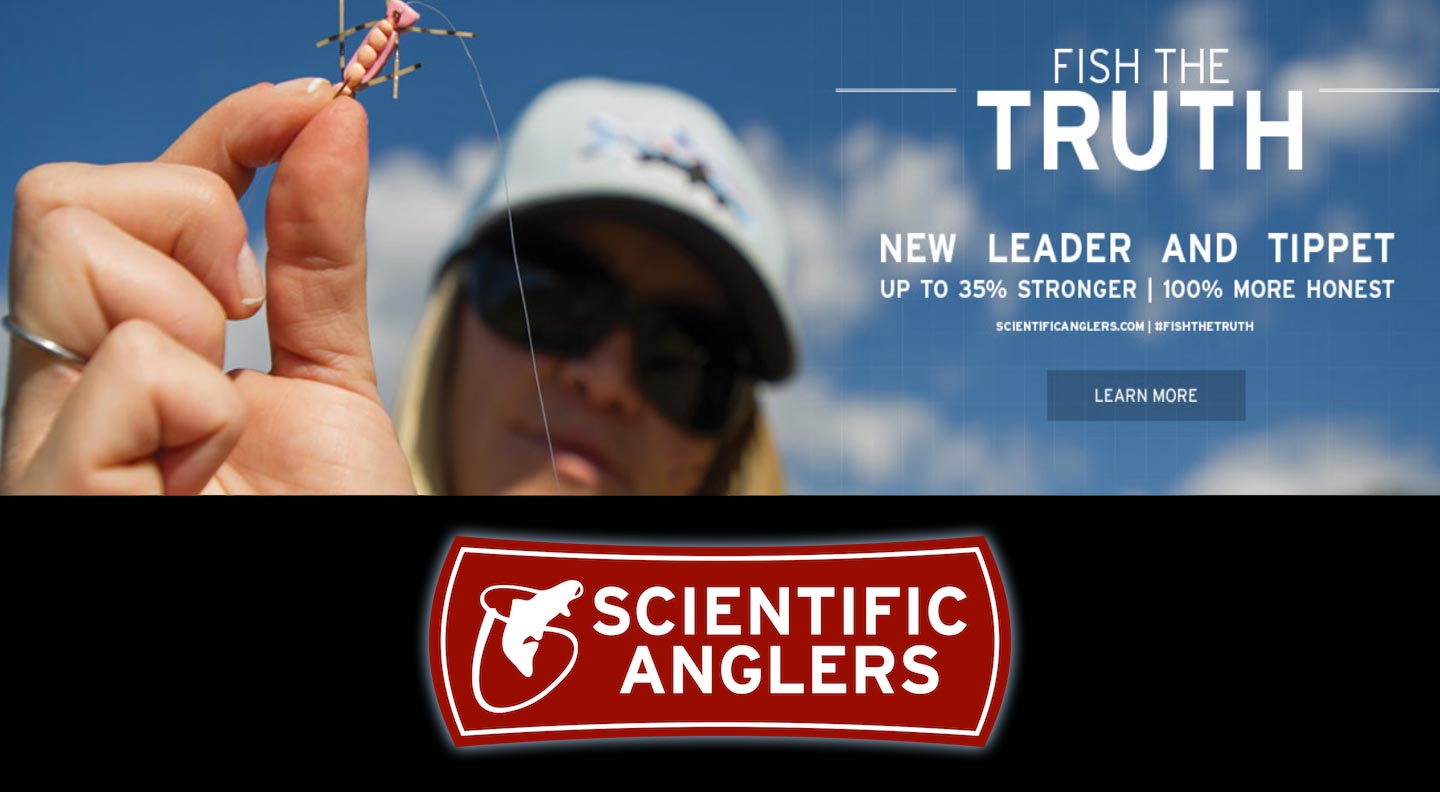
2016 will go down in history as the year of the tippet wars.
It seems that every manufacturer has new tippet and leader material this year, each claiming to be stronger than ever before. That’s probably true across the board. Advances in tippet technology happen at a global level and companies respond quickly. Scientific Anglers is making an interesting promise that’s about strength but also about truth.
The new SA tippet comes in guaranteed sizes. It seems that there may have been more variation in tippet diameter than we have known. Not just from SA but across the industry. That 6X you’ve been fishing may have been 5X all along. If you’re a technical trout angler this this should get your attention. SA is promising to put this to rest and guarantee the tolerances on their tippet.
There other news form SA in 2016, including new lines. Some very cool sink tip options with better turnover and improved performance.
CHECK OUT THIS VIDEO FOR SOME TRUTH FORM SCIENTIFIC ANGLERS.
Read More »Fly Fishing: The Importance of Having a Good Game Plan
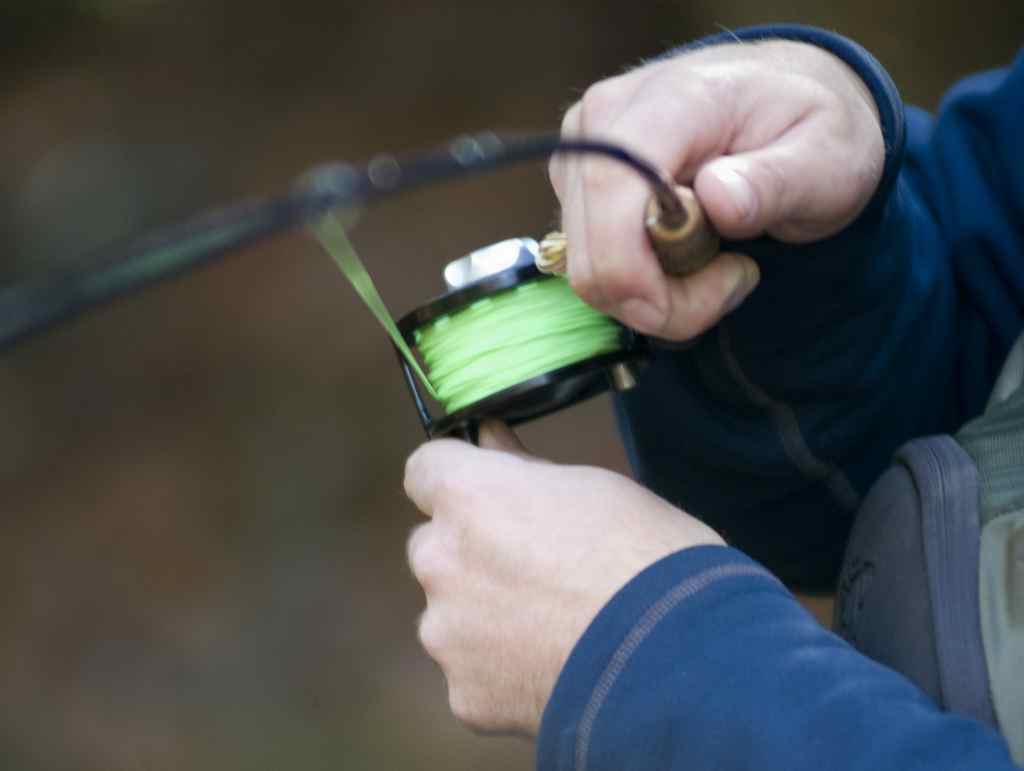
It’s cool to shoot from the hip on the water. What I mean by that, is fly fishing a new stretch of water and catching fish right out the gates. Sometimes you get lucky and hit the bullseye right off the bat, catching fish immediately after wetting your fly line. Unfortunately, that’s not going to happen ever time you pull the trigger on the water, especially on water you’ve never laid your eyes on or haven’t fly fished in months. Veteran fly fisherman that have logged hundreds, if not thousands of hours on the water fly fishing, understand this fact, and that’s why most of them have develop a familiar fly fishing game plan that they use to help them locate and decipher the feeding pattern for the given day. They’ll run through a list of different fly patterns, rig or types of water, and eventually they’ll gain enough information through observation and feedback from their fishing, that they’ll be able to dial into the most effective way to stay into the fish. This strategy is very similar to how tournament bass fisherman pre-fish water to identify and develop a pattern on the lake before tournament time. When conditions change or specific tactics yield little success, having a “game plan” of what you’re going to do next is invaluable on the water when it comes to not only getting your skunk off, but also fully enjoying your time on the water. Below is an example of a “trout game plan” that I use when I’ve not been on the water for a while or when I’m visiting new water. It usually increases my success a great deal.
Read More »UMPQUA SWIFTWATER ZS TECH VEST GIVE-AWAY
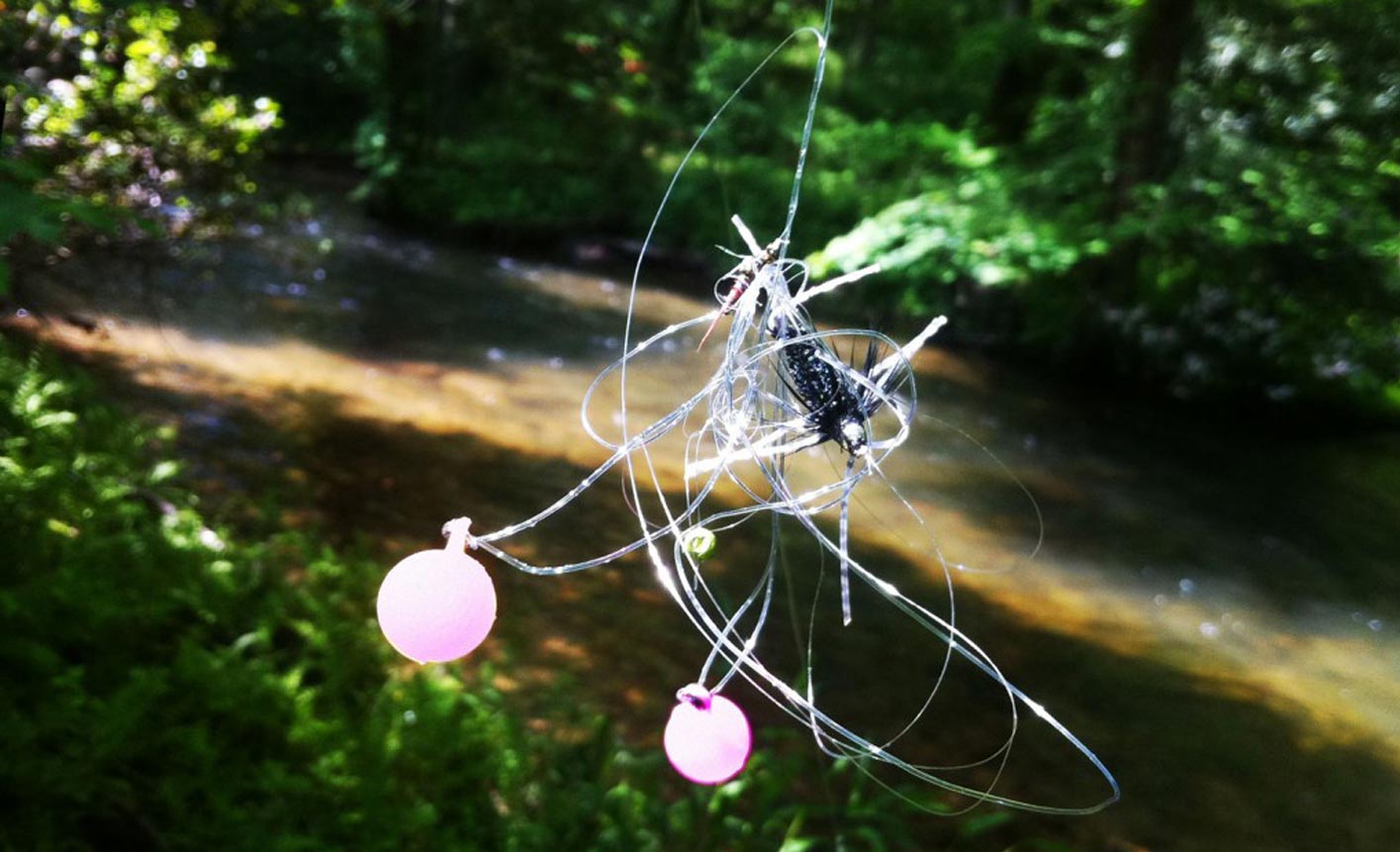
Want the new Umpqua Zero Sweep Swiftwater Tech Vest? Well, here’s how you get one!
First you have to understand the whole idea behind Zero Sweep. Umpqua worked with Navy SEALS to design their awesome new tech pack and vest. If you’re a navy SEAL about to throw down on some bad guys, the last thing you want is for your gear to get tangled. That’s why all of their gear incorporates a design idea called Zero Sweep, which means there are no places where anything can hang up or snag.
Umpqua built this Zero Sweep design into a new line of technical packs and vests and it’s pretty sweet. No place for fly line or leaders to snag. Nothing to hang on branches as you crawl through that thicket to your favorite honey hole. All of your tools tuck into their own enclosures, where you can get to them but they can’t get away. And of course they are Umpqua built, which means bomb proof. Quality fabrics and workmanship and smart design, inside and out.
So here’s how you win a Swiftwater ZS Tech Vest ($169 value) of your own.
Go to Instagram…WHAT? You’re not on Instagram? It’s fun, free and easy, click HERE to start.
Next, follow Gink and Gasoline and Umpqua Feather Merchants, so you can tag us in your post.
Then upload a photo of you biggest,
Read More »Sage One Elite Review
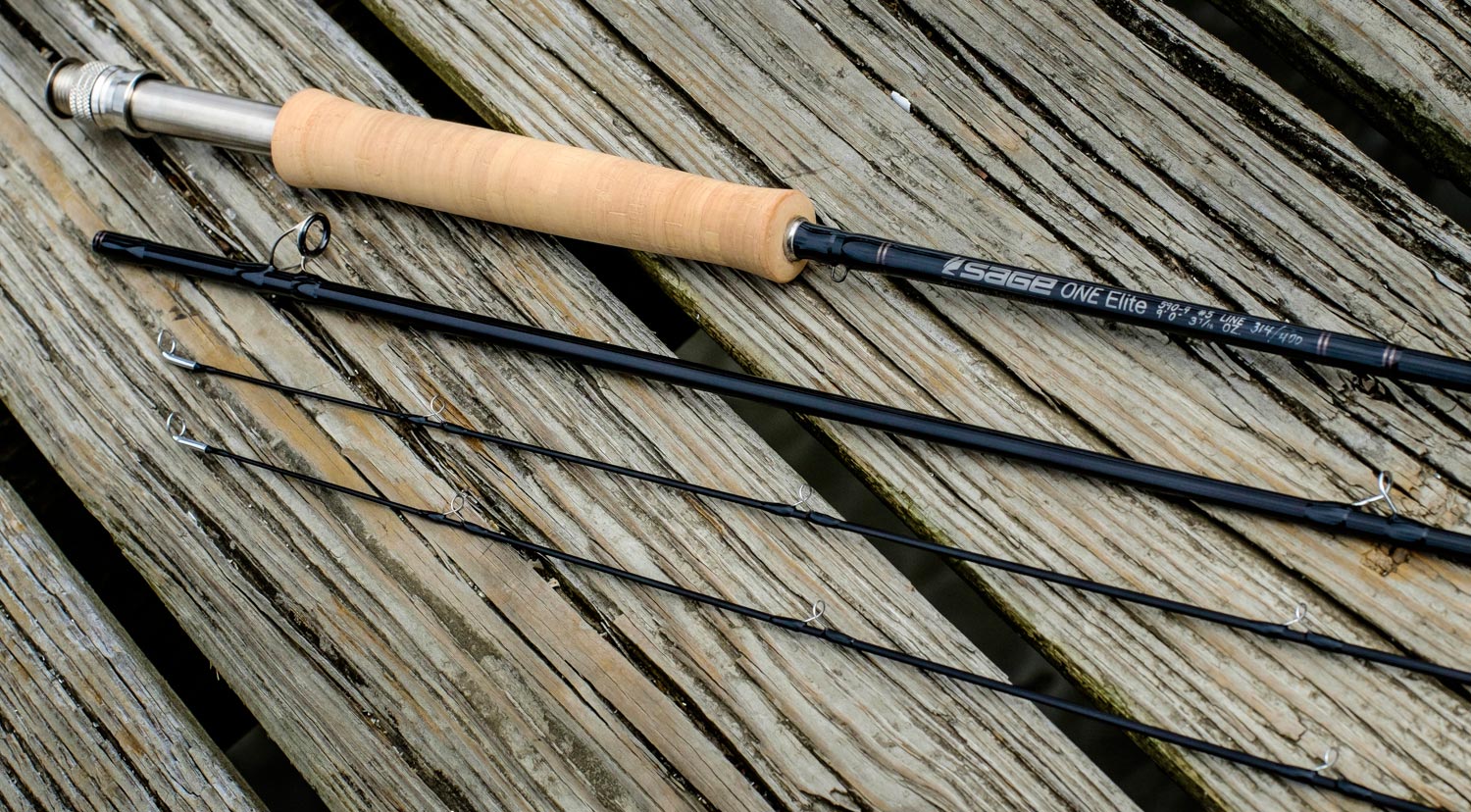
Sage takes its award winning ONE, One better.
It’s an interesting task, to take a fly rod which has been called the best ever made and make it better. Apparently Sage rod designer Jerry Siem felt like a challenge because he’s done just that. Before I give you my thoughts on this rod, I’ll start with a little disclaimer.
This rod is not cheap. I’m sure we will hear about it from the peanut gallery. I’ve written plenty about cheap rods and I’ll write more in the future. If you’re not interested in an expensive rod, stop reading now. If, however, you are at the point in your fly fishing where you are interested in investing in something really nice for yourself, or a lucky loved one, read on.
The Sage ONE Elite is a 9′ 5 wt limited edition version of the lauded ONE series with a few very special tweaks. It features all of the same basic elements that make the ONE what it is. It is a very high modulus carbon fiber rod which is extremely light with a very fast recovery rate. Sage called this combination of material and process, Konnetic Technology. I have no idea what that means. I can tell you this. Jerry did an interesting demonstration for me in the lab at Sage. He dropped two sections of rod blank on the countertop. One Konnetic and one not. The Konnetic blank made a beautiful pinging sound and jumped twice as far back off the counter. It could be Flubber, who knows?
The result, as you know if you’ve cast a ONE, is an especially crisp and precise action that’s a pleasure to cast? Like fly rods from any maker, some weights and tapers are better than others. I’ve cast a few ONEs that I didn’t care for and some that are just phenomenal. As you might guess the 9′ 5 is one they really worked on. The standard rod is nice, the Elite is amazing.
WHAT’S DIFFERENT IN THE SAGE ONE ELITE?
There are just a couple of differences between the standard ONE and the Elite.
Read More »Sunday Classic / The Redfish Wiggler
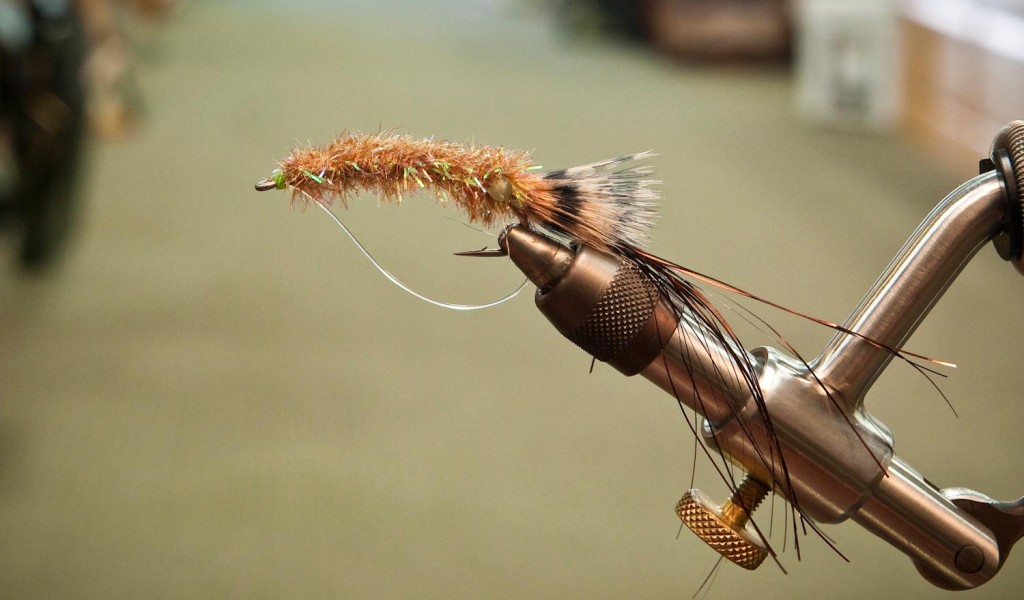
My buddy Paul Puckett is best known for his beautiful paintings of fish and his funny renderings of celebrity’s holding fish. What you may not know about Paul is that he’s a redfish junky. So much so that he recently moved to Charleston SOuth Carolina to be closer to the fish he loves. I visited The Fish Hawk the other day and Paul took the time to share one of his favorite redfish flies. If you’re headed to redfish country tie a few of these babies up. You won’t be sorry. Check out Paul’s work at paulpuckettart.com And his clothing line at floodtideco.com Come fish with us in the Bahamas! Louis Cahill Gink & Gasoline www.ginkandgasoline.com hookups@ginkandgasoline.com Sign Up For Our Weekly Newsletter!
Read More »Saturday Shoutout / Vokey & McMillan on Steelhead
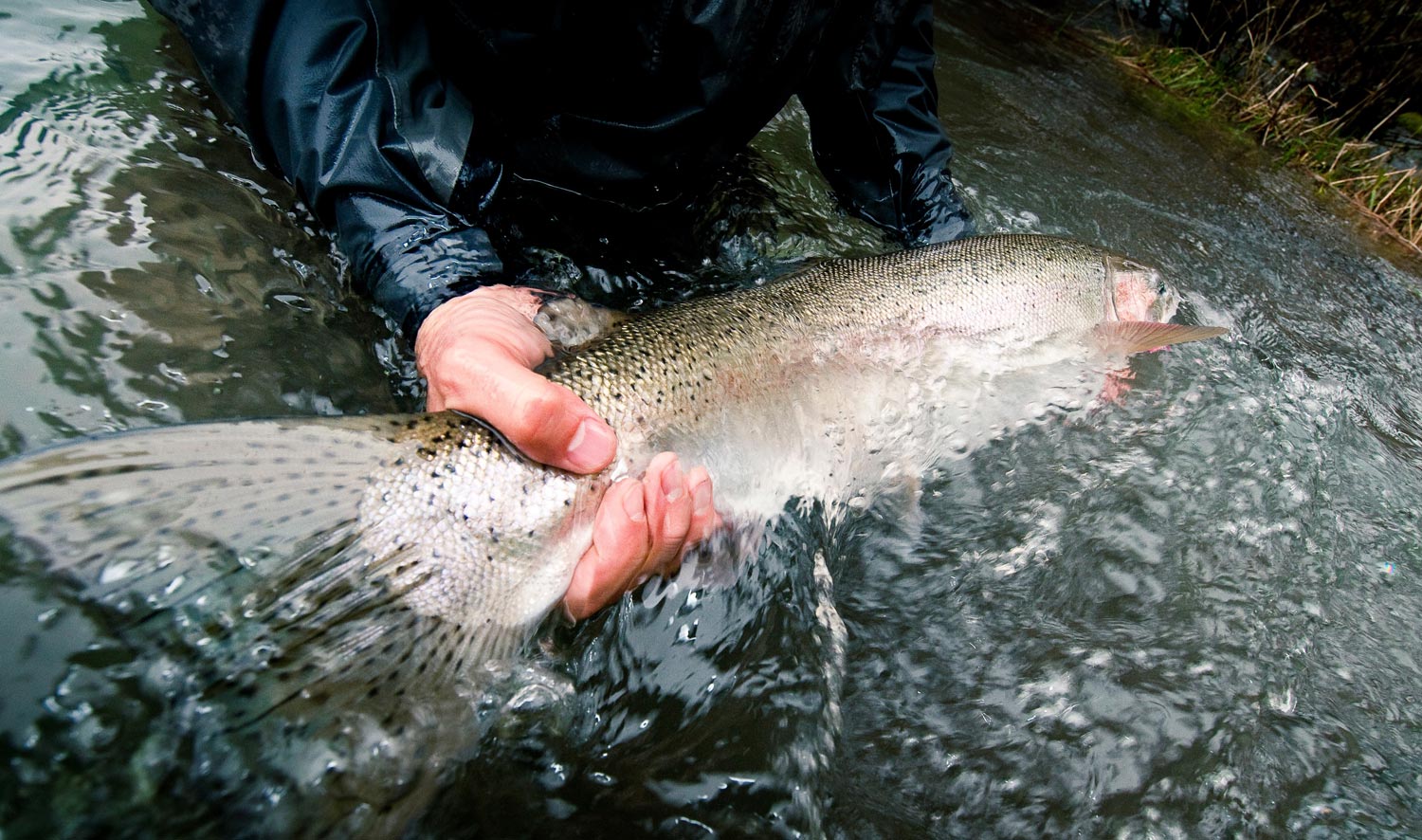
If you love steelhead, you don’t want to miss this.
Ever wandered what makes a common rainbow trout head for the ocean and become a steelhead? Or why it brother does not? Well, so has biologist John McMillan. Enough to dedicate his life to answering that question and many others about steelhead.
April Vokey sat down with McMillan recently for a podcast on the subject. It’s one of the most informative talks I’ve heard on the subject. If you’re interested in steelhead, it’s one you don’t want to miss.
CHECK OUT APRIL’S DISCUSSION WITH JOHN MCMILLAN
Read More »New Fishing Packs From Fishpond

Fishpond fishing packs just keep getting better!
The new line-up of packs from Fishpond is pretty impressive. They picked up a couple of awards at IFTD for designs that focus on comfort, function and water proofing. I’ve been using the new Thunderhead dry pack for a while now and absolutely love it. Look for a full review on that one soon.
Also worth special mention of the Drifty boat caddy. A great organizer pack that hangs on your boat or mounts on a cooler. Anyone who owns, or regularly fishes from, a boat is going to love this.
CHECK OUT THIS VIDEO TO SEE ALL THE NEW PACKS FROM FISHPOND.
Read More »